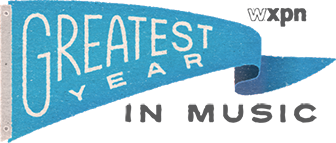We asked The Key’s Maureen Walsh to pick her favorite year in music.
Read her case for 1980 below and vote for your favorite year here.
My first thoughts on “What is the greatest year in music” are the obvious ones: 1977 and 1984. Yet, those years are a reflection of the common denominator if you ask me. The year I picked is 1980 – it’s a year where it seemed everyone was taking a chance.
First let’s get the awkward ones out of the way: Grateful Dead released the funky Go To Heaven, Linda Ronstadt covered three Elvis Costello songs on Mad Love, and Blondie’s contribution that year, Autoamerican, was a mess. Billy Joel also tried something different with the, erm, edgy Glass Houses, which contained the song “It’s Still Rock n Roll To Me,” whose message is “I’m aware that kids like this new fangled punk and new wave music but seriously they need to get off my lawn.”
Perusing through my record collection, however, I find that the following albums also came out in 1980: The Jam’s Sound Affects, Stevie Wonder’s Hotter Than July, David Bowie’s Scary Monsters and Super Creeps, Talking Heads’ Remain in Light and Iggy Pop’s Soldier. Solid albums, all of them. Then I look further: Diana and Guilty, two albums by two “divas” leaving their comfort zones. Diana is probably Diana Ross’s most solid album and was remixed by her after she was told by her friends that the original was too “disco.” There is a post-disco feel to the album, particularly the opener “Upside Down” with that bass groove by Nile Rodgers that has an aggressive feel to it. Diana overall is a more lively take on a genre that was being overtaken by the masses and turned into a monolith. Guilty is Barbra Streisand’s collaboration with Barry Gibb, who was becoming a joke at this point. Gibb stripped away the strings and falsetto and focused on melodies and Streisand’s ability to turn a phrase. If you’re not feeling the emotion on “What Kind of Fool,” or “Woman in Love,” I don’t know what to say.
Meanwhile, Donna Summer left disco and wrote and recorded The Wanderer. Her main co-writer was Harold Faltermeyer on this album and it had a more rock/pop feel. In fact, R&B seemed to be moving in that direction with this, The Pointer Sisters’ Special Things, and Grace Jones’ delightfully weird Warm Leatherette. Genres were colliding in fun ways and acts that may have felt pigeonholed were expanding their sounds and challenging their fans.
John Lennon and Yoko Ono released Double Fantasy – this was the last album Lennon recorded before his December 1980 murder. Lennon told journalists that he was inspired by the new bands coming out of New York in the previous decade. While I wouldn’t say it showed by his music, his wife’s art was validated with “Kiss Kiss Kiss” and the brazen “Moving On.” Meanwhile, Lennon’s old pal Paul McCartney recorded McCartney II, which in my opinion is his best album. There’s the weird “Temporary Secretary,” and the zen “Frozen Jap.” It was McCartney making music in a non-calculated way and just being free. A theory as to why the kabash was put on that side of Macca may be his unguarded and stunned reaction to a journalist of Lennon’s death. After 1980, he stuck to his “Beatles” personae until his work as The Fireman in the 90’s.
Nothing said 1980 like “alternative” music. Punk was an established genre by this point and bands were getting sick of playing the same three chords: experimental and more expansive bands and sounds were becoming in vogue. Many brought atmosphere and emotion with punk sensibilities. Seventeen Seconds followed up the Cure’s previous poppy sound with one that was sad and minimalist. Joy Division put out their last album, the intense Closer, two months after the suicide of their lead singer Ian Curtis. Siouxsie and the Banshees surprised many with the psychedelic Kaleidoscope. The Clash got even more expansive than London Calling with their triple album Sandinista! that had everything from “traditional” British punk to long, lumbering dub tracks to faux soul. New artists also put a jolt in the musical landscape of 1980, such as The Pretenders, X, The Feelies, Young Marble Giants, and Zapp. Orchestral Manoeuvers in the Dark released their debut in 1980 which mixed Krautrock and pop notably on “Messages,” and “Electricity.”
In some ways, 1980 was a snapshot of musicians doing things they never repeated again and of established musicians flailing through an awkward phase. For every Minutemen’s Paranoid Time, there’s a Rod Stewart’s Foolish Behavior, for every Gary Numan’s “I Dream of Wires,” a Heart’s “Bebe Le Strange.” As the decade wore on, MTV became an all-powerful juggernaut. How good-looking and clever your videos were overruled whether your music had any value. By the end of the 80s even Iggy was making synthy music for the masses. In the current musical landscape, many look to 1980 and rightly so. Check out the clips below of some of my favorite 1980 moments in music.

